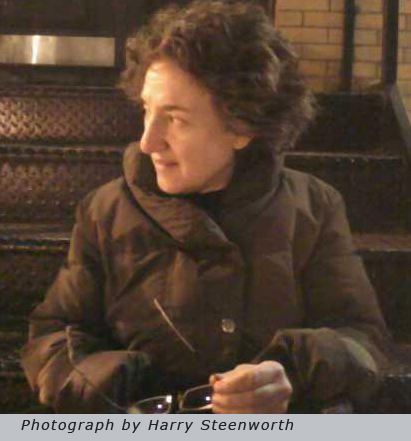 I was born in San Antonio, Texas. Somehow I always imagined I would be a painter. Since my mother lived far away, my father was an extremely busy doctor and I was an only child, my days were solitary and often unstructured. Like many children, drawing and trawling through illustrated books was my main occupation. Among my earliest memories are certain images, notably Charles Szaz's haunting illustrations for Grimm's Fairy Tales. My father's library contained an ecclectic assortment. What stands out are books on Diego Rivera, Picasso, Leger, the portrait sculptures from Benin, Da Vinci, the treasures of the city of Florence and Miro. At seven I began studying drawing and painting at the McNay Institute of Fine arts. At eleven, I was apprenticed to an elderly artist who made municipal sculptures. At fourteen, I was sent to live with my mother in New York City and discovered communes and the Metropolitan Museum. The Met became my true second home and there I discovered Medieval and Islamic art, particularly Persian miniatures. During that time, I was studying drawing at the Art Student’s League and, later, entered Pratt Institute.
I was born in San Antonio, Texas. Somehow I always imagined I would be a painter. Since my mother lived far away, my father was an extremely busy doctor and I was an only child, my days were solitary and often unstructured. Like many children, drawing and trawling through illustrated books was my main occupation. Among my earliest memories are certain images, notably Charles Szaz's haunting illustrations for Grimm's Fairy Tales. My father's library contained an ecclectic assortment. What stands out are books on Diego Rivera, Picasso, Leger, the portrait sculptures from Benin, Da Vinci, the treasures of the city of Florence and Miro. At seven I began studying drawing and painting at the McNay Institute of Fine arts. At eleven, I was apprenticed to an elderly artist who made municipal sculptures. At fourteen, I was sent to live with my mother in New York City and discovered communes and the Metropolitan Museum. The Met became my true second home and there I discovered Medieval and Islamic art, particularly Persian miniatures. During that time, I was studying drawing at the Art Student’s League and, later, entered Pratt Institute.
While I was at Pratt, Hard Edge, Minimalism and Conceptual art were the styles most in vogue. Though I admired much of what I saw, particularly the earlier Abstract Expressionists, I had no desire to speak any of those languages. Perhaps because of an innate attraction to narrative, I came under the spell of film, beginning with Bergman, Fellini, Buñuel and Teshigahara. (I also began a wide-open love affair with music that has never left me; everything from Coltrane, Shostakovich, Flamenco to Bobby Blue Bland, Koto, the music of the Islamic world and onward.)
After graduation, while working for Channel 13 in NYC, I learned some of the basics of filmmaking and produced a few documentaries for the show, “The 51st State.” Independently, I produced and distributed “Blue Collar Capitalism,” a half-hour documentary about the largest worker-owned corporation of the time, an asbestos mine in Northern Vermont. It played at the Museum of Modern Art, the Canadian Film Board, on German television and nationally on PBS. It won a Golden Eagle and was chosen to represent the US at International non-theatrical events. During those years I also worked as a film editor. I thought I might have left painting behind.
In 1980, however, when my husband and I moved into a loft on Bond Street, I began drawing again. For a few years I worked as an illustrator, doing two children’s book and an occasional illustration for advertising. Though working on children’s books pleased me enormously (I felt that I'd sat down at the table of the miniaturists I'd so loved) it soon became clear that my vision was darker than what was generally deemed marketable. The last story I set about illustrating was “Snow White.” With the first image, seen in the website under the title "The Queen Sees Her Beauty Fading," I realized I'd gone beyond a tone and a level of reference that was viable for the children’s market. I had no desire to turn back. I decided, from then on, to work entirely for myself; to paint as I wanted to paint, write scripts, make films if I chose, be serious, be humorous, be dark or light-hearted as the spirit moved me.
I’ve been lucky enough to do just that. This has been both a curse, as there is little external structure, and a blessing, as my freedom is absolute.